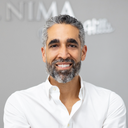I've been searching for otoplasty services for some time and as of late I've noticed that some doctors don't have the same technique. From what I've read here, their blogs, and YouTube it seems the procedure looks standard. However every once in a while I'll get a surgeon who says that they use an "otobrader" to shape the cartilage and others will say that they will remove excess cartilage then tie the ear down. The difference in how it is done is confusing me a lot. Please advise and thanks!
Answers (9)
From board-certified doctors and trusted medical professionals
Dr. Jacob Sedgh, MD

Dr. Jacob Sedgh, MD
Board Certified Facial Plastic Surgeon
Answer
Dr. Ronald J. Edelson, MD

Dr. Ronald J. Edelson, MD
Board Certified Plastic Surgeon
Answer
Dr. Nima Shemirani, MD

Dr. Nima Shemirani, MD
Board Certified Facial Plastic Surgeon
Answer
Dr. Daniel Barrett, MD

Dr. Daniel Barrett, MD
Board Certified Plastic Surgeon
Answer
Dr. Tim Sayed, MD, MBA, FACS
Dr. Tim Sayed, MD, MBA, FACS
Board Certified Plastic Surgeon
Answer
Dr. Rachel A. Ruotolo, MD, FACS
Dr. Rachel A. Ruotolo, MD, FACS
Board Certified Plastic Surgeon
Answer
Dr. William Portuese, MD
Dr. William Portuese, MD
Board Certified Facial Plastic Surgeon
Answer
Dr. Samuel Maurice, MD, FACS - Account Suspended
Dr. Samuel Maurice, MD, FACS - Account Suspended
Board Certified Plastic Surgeon
Answer
More Ear Surgery Questions
See all Ear Surgery Q&AWE SEND PRETTY
EMAILS
What’s trending? Who’s turning heads? Which TikTok myths need busting? We’ve got you. No fluff, no gatekeeping—just real talk. Get our free, unfiltered newsletter.